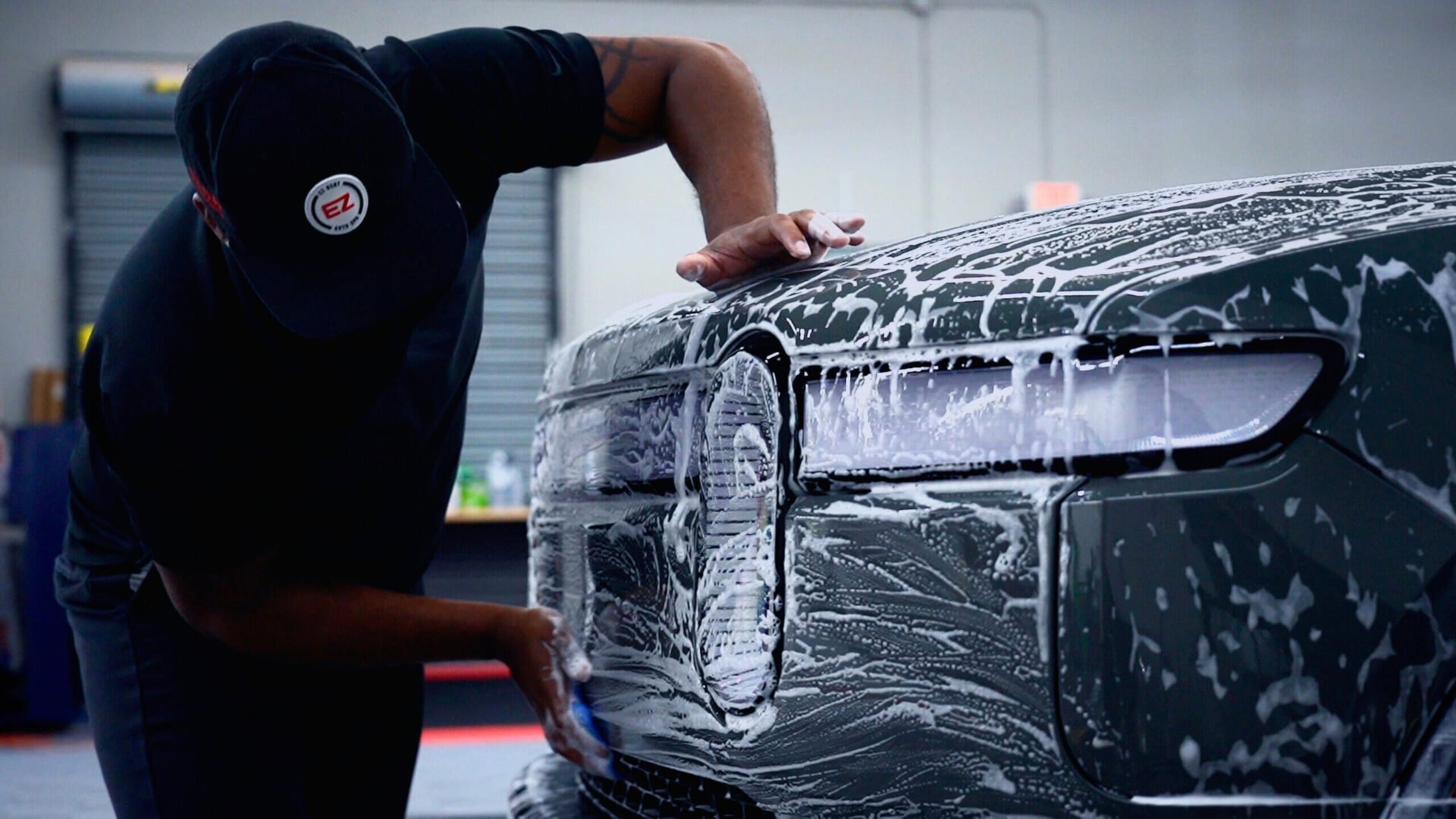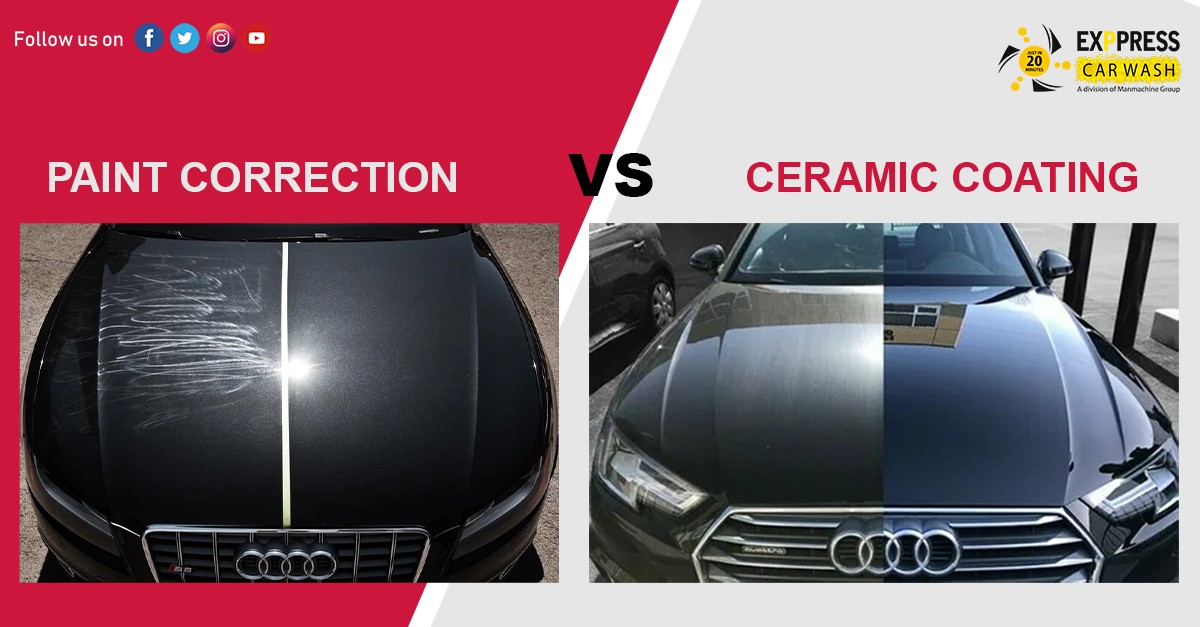The Lasting Advantages of Ceramic Coating for Superior Automobile Defense
The Lasting Advantages of Ceramic Coating for Superior Automobile Defense
Blog Article
Discovering the Science Behind Ceramic Finishing and Its Influence on Vehicle Describing
The application of ceramic coating in car detailing stands for a substantial innovation in auto treatment, rooted in its advanced chemical homes, mainly silica dioxide and titanium dioxide. As we explore the intricacies of the application procedure and the lasting ramifications for car maintenance, it comes to be clear that the option of ceramic finishing can fundamentally alter one's strategy to auto treatment.
What Is Ceramic Finish?
Ceramic covering is a modern-day option that has gotten popularity in the auto outlining sector for its capability to give resilient defense for car surface areas. This sophisticated safety layer is generally made up of silica dioxide (SiO2), which forms a strong bond with the vehicle's paint, developing a long lasting shield against ecological pollutants. Unlike conventional wax or sealers, ceramic coverings supply superior resistance to UV rays, chemical spots, and physical abrasions.
The application of ceramic layer involves a careful procedure, where the car's surface area is extensively cleaned and decontaminated before the layer is applied (Ceramic Coating). Once treated, the layer enhances the car's gloss, depth, and quality, giving a showroom-quality finish that lasts for years. One of the crucial benefits of ceramic coating is its hydrophobic homes, which drive away water and dust, making maintenance easier and decreasing the frequency of laundries
The Chemistry of Ceramic Finish
A basic aspect of ceramic covering depends on its chemical composition, mainly defined by the existence of silica dioxide (SiO2) This compound is essential to the formation of a resilient, protective layer that bonds chemically to the car's surface. When applied, the SiO2 molecules undergo a procedure recognized as polymerization, in which they create a network of interconnected frameworks. This leads to a robust, hydrophobic surface that wards off water and pollutants.
In enhancement to SiO2, several ceramic finishes integrate titanium dioxide (TiO2) and other ingredients to boost their performance qualities. TiO2, as an example, adds to enhanced hardness and chemical resistance. The communication in between these compounds creates an unique molecular framework that provides a high level of defense against environmental variables such as UV rays, acid rain, and oxidation.
Furthermore, the application procedure commonly involves a thorough prep work of the surface to make sure optimal attachment of the finishing. This chemistry not only ensures a durable surface but likewise enhances the visual appeal of the automobile. Understanding the complex chemistry behind ceramic finishes is important for describing experts who aim to provide premium security and longevity for their clients' vehicles.
Benefits of Ceramic Layer
While detailing professionals typically highlight the benefits of ceramic coatings, their benefits extend far beyond aesthetic appeals. Ceramic finishes develop a hydrophobic surface area that fends off dust, gunk, and water, significantly reducing the frequency of cleans and the initiative called for to preserve an automobile's appearance.
Furthermore, ceramic coverings enhance the longevity of the vehicle's coating. Unlike typical waxes or sealants, which may last a couple of months, ceramic layers can sustain for many years, offering a long-term solution for auto treatment. This longevity equates to cost savings, as proprietors are less likely to require frequent reapplication.
Additionally, ceramic layers are resistant to chemical stains and etching, which can take place from acidic compounds like bird droppings or tree sap. This resistance not only maintains the car's visual appeals yet likewise minimizes possible damage - Ceramic Coating. On the whole, the financial investment in ceramic covering supplies cars and truck owners a substantial return in terms of defense, ease of upkeep, and lasting aesthetic appeal, making it a significantly popular selection in the realm of vehicle detailing
Application Refine Explained

Once the surface is appropriately prepared, the ceramic finish can be applied. Using an applicator pad, the professional applies the coating in tiny sections, this hyperlink functioning in a crosshatch pattern to guarantee also protection.
After applying the layer, the automobile must be permitted to cure, which might take a number of hours to numerous days, depending upon the specific product made use of. During this duration, it is important to maintain the vehicle far from moisture and pollutants. Once treated, the ceramic covering creates a strong bond with the paint, supplying boosted security and a shiny finish. Appropriate application is essential to maximize the durability and performance of the ceramic finishing.

Long-lasting Effect on Car Care
The long-term influence of ceramic layer on automobile care is significant, as it fundamentally modifies just how owners maintain their vehicles. By developing a sturdy, hydrophobic layer on the lorry's surface, ceramic layers lessen the adherence of dirt, crud, and impurities. This property reduces the regularity of cleaning called for, inevitably saving water and cleansing items.
In Addition, the UV security provided by ceramic coverings helps to stop oxidation and fading of the car's paint, maintaining its aesthetic allure and resale value with blog here time - Ceramic Coating. This protective obstacle also minimizes the likelihood of scrapes and swirl marks, which are common problems in traditional paint surfaces
Moreover, ceramic finishings facilitate simpler upkeep, allowing owners to cleanse their vehicles with very little initiative. The smooth surface makes it tough for impurities to bond, enabling easier elimination throughout routine cleaning.
In the future, the investment in ceramic finishing might lead to cost savings in automobile treatment product or services. Generally, the sustaining advantages of ceramic coverings not only boost the look of vehicles but likewise add to an extra reliable and lasting method to automobile upkeep.
Verdict
In verdict, the application of ceramic covering represents a considerable improvement in auto detailing, driven by its unique chemical composition of silica dioxide and titanium dioxide. This technology not only enhances the aesthetic appeal of vehicles but also provides robust protection versus ecological threats and put on. The lasting advantages, consisting of minimized upkeep frequency and improved sturdiness, highlight the value of ceramic coverings as a vital investment for maintaining vehicle look and honesty gradually.

Report this page